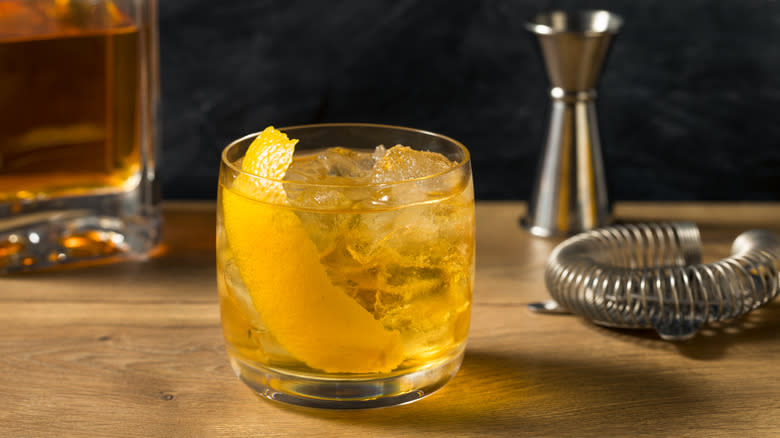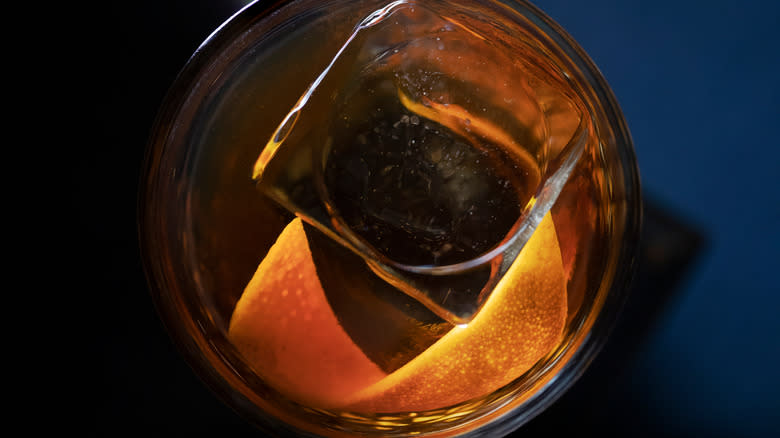Rusty Nail: The 2-Ingredient Cocktail Beloved By Frank Sinatra

While elaborate, multi-ingredient cocktails are delicious, there's a special synergy in two-ingredient drinks. Sometimes, the mixture of two components can provide a wondrous result with a more complex taste than you'd expect. Such is the case with the Rusty Nail, a sling that mixes Scotch with Drambuie, a whiskey liqueur flavored with herbs and honey.
Likely invented at a trade show in the 1930s, the drink was a hit in the 1960s and 70s, served at trendy locales in New Orleans and New York City. One included P.J. Clarke's, a bar in the Big Apple where Frank Sinatra hung out. In fact, the singer was an avid whiskey drinker as well as a home mixologist — and alongside other members of the influential Rat Pack, Sinatra helped popularize the Rusty Nail as the drink of choice for the sophisticated imbiber.
However, after some years in the spotlight, the cocktail fell out of fashion and disappeared. Today, it remains an obscure choice, and not all bars stock Drambuie, so the Rusty Nail may not be available at your local watering hole. But that's not to say it's not worth crafting. If you're looking for something elegant and easily customizable, it's simple enough to whip up at home.
Read more: The 40 Absolute Best Cocktails That Feature Only 2 Ingredients
The Rusty Nail Combines Varying Parts Of Scotch And Drambuie

As a two-ingredient drink, the Rusty Nail is straightforward to make. However, the precise proportions of ingredients vary, which significantly impacts its character. Many recipes recommend three parts whiskey to one part liqueur for a more booze-leaning rendition with a balanced sweetness. Others make a Rusty Nail with equal parts of each, assembling a version that boasts a brighter honey and herbal character with more sweetness. Other versions boast proportions in between these two; many also break out of the two-ingredient mold and toss in a dash of bitters before stirring the cocktail with ice and pouring it into a glass. But most agree on the lemon peel garnish: In addition to being aesthetically pleasing, it adds a fresh, tart aroma to balance the sweetness.
Why does the resultant elegant drink have such an off-putting name? Legend has it that bartenders used to stir these cocktails with an actual rusty nail, but it's much more likely that the name is a reference to the drink's color. So the next time you're craving an after-dinner cocktail, consider looking past the Rusty Nail's neglected reputation and stir up this easy-drinking yet boozy delight.
Read the original article on Tasting Table.
